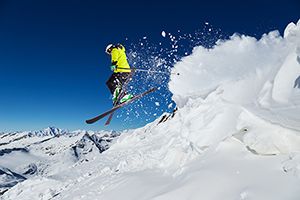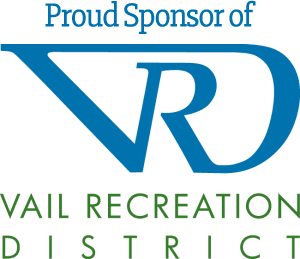
Proposed Ski Legislation
Skiing in Colorado is becoming more dangerous than ever with less and less oversight by ski resorts as a result of a number of factors, including overcrowding of the ski slopes due to Epic and Ikon passes. Technological advancements to ski equipment have also made skiers ski faster than ever. As a result, the margin of error is increasing for skiers to collide with other skiers on crowded slopes, and the number and severity of injuries caused by skier v. skier collisions have grown substantially.
Thus, ski resorts must:
- perform complete and more accurate investigations of ski collisions; and
- install video cameras in high-traffic areas and lift areas to better document collisions and provide greater accountability.
These protective measures are greatly needed as set forth herein.
Moreover, ski resorts do little to make the sport safer while purposely overpopulating their ski runs. They also fail to properly train and supervise their employees, including the lift operators who control the dangerous, and sometimes deadly, ski lifts. This is because the ski resorts are able to completely insulate themselves from liability with exculpatory waivers that are contrary to the public interest and violate the Colorado Skier Safety Act, and provide little incentive for ski resorts to implement necessary safety measures.
In fact, during oral arguments in the recent Brigance v. Vail Summit Resorts, Inc., case before the 10th Circuit Court of Appeals, which addressed the enforceability of Vail’s broad and punitive exculpatory agreements, some justices even referred to these exculpatory agreements as “distasteful.” However, Colorado state courts have never expressly ruled on this issue. In its opinion, as further detailed herein, the Brigance Court issued a call to action to the Colorado state courts and legislature to weigh-in on this important issue.
Thus, the Colorado General Assembly must act to protect Colorado citizens, and the tourists this state heavily relies on, to hold ski resorts accountable for dangerous conduct that frequently arises at Colorado’s ski resorts.
A. Ski Collisions
Under Colorado law, injured skiers can sue other skiers, or snowboarders, for negligence to recover damages for their injuries. To prevail on a claim, injured skiers must simply prove negligence, not recklessness. Under Colorado’s Ski Safety Act, C.R.S. § 33-44-101, (“SSA”), skier versus skier collisions are not considered an inherent risk of skiing. Therefore, negligent skiers cannot raise the defense of assumption of the risk.
Further, pursuant to C.R.S. § 33-44-109(2), all skiers have a duty to avoid collisions with any person or object below them.
Accordingly, juries are usually instructed that “if they find by a preponderance of the evidence that the plaintiff was downhill of the defendant then the law presumes (absent a preponderance of rebutting evidence) that defendant was negligent because he [or she] breached the primary duty to avoid the collision.
Further, the SSA defines skiers’ duties as follows:
- The responsibility to ski within his or her ability;
- The duty to maintain control of his or her speed and course at all times; and
- The duty to maintain a proper lookout so as to be able to avoid other skiers and objects.[1]
Skier on skier collisions are daily occurrences at all ski areas, leading to serious injuries of guests.
In addition, lift operations have also become deadly. Last winter, chairlift attendants at Vail Resorts, Inc.’s Blue Sky Basin chairlift were not paying attention as Jason Varnish, a 46-year-old, attempted to load the lift with his friend while the seat was in an upright position. However, the Vail lift operators failed to flip the seat down, and he was pushed forward off of the loading area. Mr. Varnish attempted to escape the lift, but his ski coat became caught on the seat and wrapped around his chest and abdomen, causing him to hang over 20 feet above the ground.
While Mr. Varnish was struggling and trying to unhook himself from the chairlift, his friend, who had jumped off of the lift and landed safely on the ground, yelled at the lift operator to stop the lift. At the same time, other guests below the lift witnessed Mr. Varnish dangling and frantically began forming a human pyramid to try to push him back onto the seat. Tragically, the lift operator did not stop the chairlift, or place the lift in reverse. As a result, Mr. Varnish died of positional asphyxia a couple of feet away from the loading area while onlookers watched in horror. Chairlift seats flipping up is a common occurrence and is well discussed in lift operation manuals.
Furthermore, the prior winter before Mr. Varnish was killed, Kelly Huber died at the Ski Granby Ranch after her and her three daughters were thrown from the chairlift.[2] Fortunately, her daughters survived the deadly incident.
Since the introduction of multi-resort passes, skiers drive in heavy traffic to wait in unprecedentedly long lift lines and ski down crowded slopes. In fact, Vail Resorts sold over 1.2 million passes for the 2020 ski season.
From 2011 to 2017, approximately 100,000 skiers in Colorado reported to the emergency room or were hospitalized for ski injuries. Overwhelmingly, studies show that victims of ski collisions are injured much more frequently than the causers (93% versus 25%) and they suffer severe injuries due to the high rates of speed that the causers were skiing downhill at the point of impact.
In addition, “Studies suggest that over thirty percent of skier collisions result in head injuries,” especially those involving children. These studies also show that “the most frequent cause of fatality in skiing was impacting a fixed object, usually a tree, but that skier collisions cause the most severe injuries than ordinary falls on the slope.”
B. Exculpatory Clauses
Also, due to the recent 10th Circuit Federal Court ruling in Brigance upholding exculpatory agreements, lift operators are essentially immune from liability as a result of extremely broad exculpatory clauses. These adhesive exculpatory agreements violate public policy and are contrary to the SSA. Even worse is the ski resorts are complicit in aiding at fault skiers/tortfeasors from evading liability for seriously injuring other guests. These unconscionable exculpatory clauses also contain a chilling and abusive provision in which every guest who purchases a ski pass or lift ticket assumes and states:
I AGREE TO HOLD HARMLESS, RELEASE, INDEMNIFY, AND NOT TO SUE Vail Resorts, Inc….FOR ANY PROPERTY DAMAGE, INJURY OR LOSS TO PARTICIPANT, INCLUDING DEATH, WHICH PARTICIPANT MAY SUFFER, ARISING IN WHOLE OR IN PART OUT OF PARTICIPATION IN THE ACTIVITY, INCLUDING BUT NOT LIMITED TO, THOSE CLAIMS BASED ON ANY RELEASED PARTY’S ALLEGED OR ACTUAL NEGLIGENCE OR BREACH OF ANY CONTRACT AND/OR EXPRESS OR IMPLIED WARRANTY…I AGREE TO INDEMNIFY THE RELEASED PARTIES FOR ALL LIABILITY AND CLAIMS, INCLUDING ATTORNEYS’ FEES, ARISING FROM ANY MISREPRESENTATION OR FRAUDULENT EXECUTION OF THIS AGREEMENT.[3] (Emphasis Added).
Thus, in addition to being completely shielded from liability, the lift operator has the ability to countersue for all attorney fees and costs, even if the lawsuit is allowed and protected by the SSA. This indemnification language results in the Resort having the ability to file countersuits each time it is sued by an injured skier for negligence. This incredibly unjust result is not contemplated in any manner by the SSA, and allows the ski resorts to improperly use their exculpatory clauses as a sword, not a shield, which clearly violates public policy and punishes injured victims for merely asserting their legal rights.
- Resorts
The 10th Circuit Court of Appeals has ruled that exculpatory waiver agreements for recreational activities, including skiing, “are enforceable and bar [injured skier’s] claims against” ski resorts. Some of the Appellate Justices of this decision expressed that this “distasteful” result “no doubt, means some losses go uncompensated,” and the Colorado Supreme Court and General Assembly may someday “prefer a policy that shifts the burden of loss to the service provider, ensuring compensation in cases like this.” Brigance v. Vail Summit Resorts, Inc., 883 F.3d 1243, 1262 (10th Cir. 2018). (Emphasis Added). But the Court explicitly held “it is [the Colorado State Supreme Court and/or the General Assembly’s] decision to make, not ours.” Id (Emphasis Added).
In general, chairlifts usually operate safely, however when a chairlift malfunction is combined with operator error, they become extremely dangerous, and even deadly, very quickly. The majority of chair lift injuries occur while guests load and unload the lift. Accordingly, lift attendants have a duty to stop the lift when a passenger is in danger. In fact, the American National Standards Institute adopted a universally regarded authoritative code which requires lift attendants to “maintain orderly passenger traffic conditions” and “stop the aerial lift immediately…if a condition develops in which the continued operation of the lift might endanger a passenger.”
Historically, and prior to the Brigance decision, the Colorado Supreme Court held ski operators “to a high standard of care in the operation, use and maintenance of lifts, trams and tows,”[4] but ski operators now have no duty due to these liability waivers. These waivers completely contradict the SSA as the SSA specifically states “the term ‘inherent dangers and risks of skiing’ does not include the negligence of a [ski operator],” or skier versus skier collisions. The SSA further explicitly states “Nothing in this section shall be construed to limit the liability of the ski area operator for injury caused by the use or operation of ski lifts.”
-
Most Other States with a Skier Safety Act Have Found Exculpatory Clauses Unconscionable
It is time for Colorado to invalidate these Exculpatory Agreements when the terms conflict with the SSA and give guests the protection they deserve. Skiers should never be seriously injured or die while skiing, especially at the hands of a negligent lift attendant, and exculpatory clauses should not absolve anyone from such liability. Colorado’s mountains must become safer, and there are simple solutions available for this to occur, but ski operators will have no incentive to make any changes so long as liability waivers continue to bar injured skiers’ claims.
Most states with Ski Safety Acts have held exculpatory clauses/agreements are unconscionable. Specifically, Oregon, Utah, Massachusetts, Vermont, California, Washington, New Hampshire, and other states which all have extensive revenues from the ski industry have analyzed exculpatory waivers in similar contexts and held that they are void as against public policy. Cass v. Am. Home Assurance Co., 699 N.W.2d 254, (Wis. Ct. App. 2005), (Court determined that the waiver did not release the ski area employee’s actions of hitting a skier with a snowmobile); Strawbridge v. Sugar Mt. Resort, Inc., 320 F.Supp. 2d 425 (D.N.C. 2004) (Despite the fact that the skier signed a “hold harmless” agreement releasing the resort of any liability, the court held the release invalid because it was against the public interest); Hiett v. Lake Barcroft Community Ass’n, 418 S.E.2d 894, 895-97 (Vir. 1992).
Notably, the Vermont Supreme Court determined “if defendants were permitted to obtain broad waivers of their liability, an important incentive for ski areas to manage risk would be removed, with the public bearing the cost of the resulting injuries.” Spencer v. Killington, Ltd., 167 (Emphasis Added). The Utah Supreme Court similarly held that a release and indemnification waiver contained in a ski pass was void as contrary to public policy, and therefore unenforceable. Rothstein v. Snowbird Corp., 175 P.3d 560, 565 (UT 2007).
Therefore, it is time to enact legislation that is truly reflective of the State’s interests to protect skiers and their ability to recover for their claims for ski resorts’ negligence. Such legislation should require ski resorts in Colorado to implement greater safeguards to put an end to these tragic deaths and injuries.
C. Accident Investigations
Vail Resorts and its employees know the locations on the mountain and times in which ski collisions are most likely to occur, but they do not disclose this information to guests because it would likely act as a deterrence for many skiers. Currently, the Resort is only required to report deaths and chooses to investigate only three types of incidents:
(1) deaths;
(2) chair lift injuries; and
(3) guests’ injuries caused by employees.
Furthermore, ski patrol is not authorized to assess fault or wrongdoing when two skiers collide, and can be fired or terminated if they do so. Secondly, it is almost impossible for injured guests to get appropriate information when they are injured by others. This firm represented a woman who was seriously injured by another guest while ice skating at the Keystone Lake, which is owned by Vail Resorts.
Despite having cameras at the lake, Vail failed to preserve any video footage of the incident, claiming that its cameras are only live-streamed and do not record footage. Moreover, Vail did nothing to investigate the incident or even create any incident report, despite the fact that the victim’s injuries were so severe she had to be taken from the lake by ambulance to the hospital. The victim was never able to obtain compensation because Vail failed to preserve critical evidence and the victim never learned who injured her.
As a result, Vail Resorts is not doing anything whatsoever to investigate skier collisions that cause serious, life-changing injuries, and it is extremely difficult for victims to pursue any claim for their injuries. Colorado law and the SSA requires injured victims to have the opportunity to sue and recover for their claims of negligence, however lift operators thwart their right to do so. Therefore, there needs to be new legislative protections that require the Resort to at least investigate, and potentially report serious injuries, if it is determined a guest injures another guest.
Prior to filing a lawsuit, ethical rules require parties to provide each other with free access to potential witnesses and refrain from interfering with efforts of opposing counsel to conduct pre-trial interviews in the interest of justice. In fact, the law permits attorneys to contact corporations to investigate a legal matter, even when the corporation may be a defendant in the case. See Johnson v. Cadillac Plastic Group, 930 F.Supp. at 1437, (Dist. Colo. 1996); People v. Wright, 196 P.3d 1146 (Colo. 2008). The Johnson Court held that “An interpretation of Rule 4.2 that limits counsel to (and burdens their clients with the costs of) formal discovery during the investigatory stages of civil litigation is not only fundamentally unfair, but also frustrates the purposes of Rule 11, Fed. R. Civ. P.”
Therefore, ski resorts are under a legal and ethical obligation not to interfere with the administration of justice and to further the State’s interest to protect skiers’ abilities to recover damages for their claims. Accordingly, there should be further regulations that require ski resorts to provide skiers with free access to their records.
II. Legislative Action is Necessary for Lift Operation and Greater Skier Safety
Unfortunately, like Mr. Varnish and Ms. Huber, skiers die and even more frequently suffer severe injuries while loading and unloading chairlifts at Vail Resorts due to lift operators’ negligence, and their injuries could have been prevented if the chairlift was stopped in the event of a problem. Chairlift seats flipping up by wind is also a common occurrence.
As further discussed below, placing video cameras in all loading and unloading zones should be required.
In March 2020, Mr. Varnish’s family filed suit against Vail Resorts for negligence. However, given the recent Brigance decision that upheld extremely broad exculpatory clauses, Vail Resorts may be completely insulated from any liability whatsoever for this tragic death.
Interestingly, this law firm was awarded punitive damages by a jury for their Client against Vail Resorts in a similar incident.
As noted by the Colorado Federal Court of Appeals in Brigance, the time has come for Colorado to enact legislation in a twofold manner that is truly reflective of the State’s interests to protect skiers and their ability to recover for their claims of negligence for operator error in chair lift related cases.
PLA Provisions
The inherent dangers of skiing and ski lifts prompted the legislature to enact specific provisions within the Colorado Premises Liability Act (PLA), the Passenger Tramway Safety Act (PTSA), and the SSA. This was done to ensure the protection of individuals and their ability to recover damages for their claims of negligence.
For example, the SSA specifically states “[t]he general assembly hereby finds and declares that it is in the interest of the state of Colorado to establish reasonable safety standards for the operation of ski areas and for the skiers using them.” C.R.S. § 33-44-102.
As set forth previously, historically, the Colorado Supreme Court determined that the operation of ski lifts imposes the “highest degree of care commensurate with the practical operation of the lift”. This standard imposed on ski lift operators cannot be abrogated by statutory claims. Bayer v. Crested Butte Mountain Resort, Inc., 960 P.2d 70, 79-80 (Colo. 1998).
Further, the two Colorado Court of Appeals decisions determined that exculpatory releases are not enforceable when they violate public policy. Specifically, in Phillips, the Court found no error in excluding language on the back of a lift ticket in light of the safety provisions of the Colorado Ski Safety Act, at C.R.S. § 33-44-101, by which a skier was purported to have agreed to assume the risk of skiing, holding that “[s]tatutory provisions may not be modified by private agreement if doing so would violate the public policy expressed in the statute.”
Accordingly, prior Colorado case law and the SSA indicate that ski resorts cannot negate their statutory duties by use of an exculpatory release that provides insulation from liability, regardless of the circumstances.
In part II, we’re going to talk about our proposed changes and preventative measures to improve skier safety and lift operation awareness. Please do not hesitate to contact us at 303-331-1700. You can also email us at jbloch@blochchapleau.com and tongert@blochchapleau.com for any questions or to discuss this legislative idea further.






